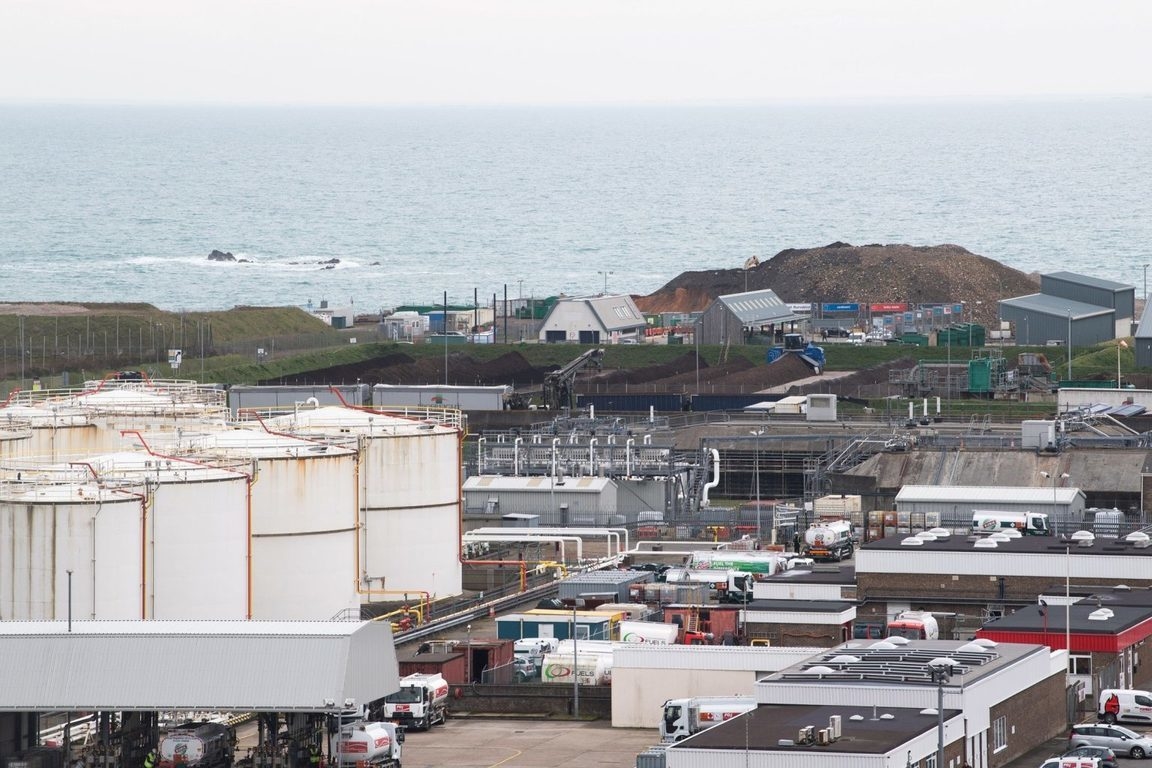A GROWING ‘mountain’ of waste that the government has been dumping at La Collette without planning permission could be about to get even bigger, if States Members approve a proposition lodged by the Infrastructure Minister.
Deputy Tom Binet’s proposal to officially sanction an east, west and south headland – made up of waste – follows a Planning Committee meeting last month, at which the Infrastructure and Environment Department’s application to continue to create large headlands of hazardous waste south of the incinerator was unanimously rejected.
Described as ‘phase two’ of the government’s plan for waste management at La Collette, the proposals – if successful – would rubber-stamp waste being deposited at the site. Without any alternative location, contaminated waste will continue to be dumped there without planning permission.
Images attached to the application show the proposed new height of the pile of waste, which would further obscure views of the western side of St Aubin’s Bay for Islanders living near La Mare slip.

The government said it would be left with two ‘challenging’ options if it could not continue to dump waste at La Collette.
The choices, it said, would be to restrict construction that generated hazardous waste or to develop an alternative waste site.
The former option would have a ‘widespread local impact’ on the construction industry while the latter carries ‘a number of environmental challenges, and would not be a quick solution’.
‘Phase two’ of the government’s waste management plan includes the ‘landscaping and restoration’ of the east and south headland and the creation of a one-mile public coastal path around the perimeter of the site, once the restoration is complete.
Deputy Binet is also seeking States approval to allow him and Environment Minister Jonathan Renouf to develop a ‘long-term plan for the future waste strategy for Jersey’, which would be used to inform the next review of the Island Plan in 2026.
‘Given the difficulties in finding a satisfactory alternative for the future disposal of inert and non-combustible waste materials, it is considered to be in the Island’s best interests to maximise the lifetime of La Collette as a tip site and to incorporate super-filling. This will also enable the creation of a landscaped buffer, screening the site from the east, and providing an area of public open space,’ the proposition states.
In his report, Deputy Binet wrote that following the Planning Committee’s rejection, ‘the Island is without a facility for the management of hazardous waste’.
‘Furthermore, permissions for the disposal of inert waste soils at the site will be exceeded in the short term,’ he added.
There was no option to export hazardous waste owing to international agreements, according to the proposition.
While waste can still be dumped in the centre and north of the site, the government is already breaching planning permission with the east headland and is likely to breach permission to the west in the short term, the report stated.
During last month’s planning meeting, St Clement Constable Marcus Troy said it was not the committee’s job to ‘rubber-stamp unauthorised dumping over the last 20 years’.
Mr Troy said: ‘We are being put in an impossible situation. We need to explore what opportunities there are to export before we build Table Mountain in our backyard.’
Rejecting the planning application, the committee urged IHE to submit a retrospective application – to gain permission for what has already been built – as quickly as possible.
Around 200,000 tonnes of inert waste is sent to La Collette every year, with approximately 120,000 tonnes of this recycled into aggregates for use in construction, while the 80,000-tonne surplus is dumped at the site.






